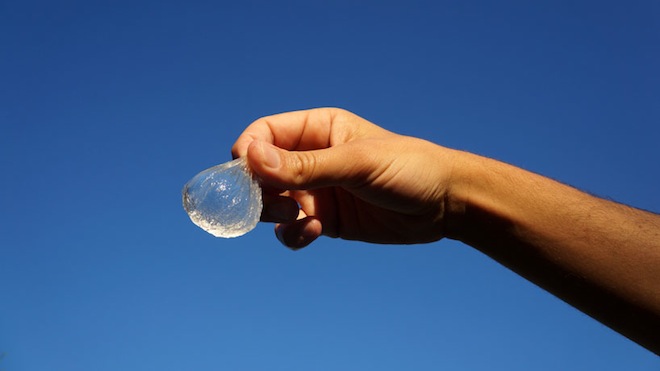 Plastic. No word assaults our sensibilities more. Plastic in the bellies of baby birds; plastic strangling marine animals; plastic leaching chemicals into our water supply. Plastic everywhere. But with Ooho, an edible water ‘bottle’ that just about anyone can make, we could get a handle on the plastic mess – at least a little one.
Plastic. No word assaults our sensibilities more. Plastic in the bellies of baby birds; plastic strangling marine animals; plastic leaching chemicals into our water supply. Plastic everywhere. But with Ooho, an edible water ‘bottle’ that just about anyone can make, we could get a handle on the plastic mess – at least a little one.
Winners of a Lexus Design Award 2014, Spanish students Rodrigo García González, Pierre Paslier and Guillaume Couche reworked a concept that has actually been around for a while in order to create a water receptacle that is cheap, easy to make, durable, and biodegradable.
Replicating both the design and function of a single water drop, Ooho is a “new way of packaging that propose [sic] an alternative to the plastic bottle,” the students write in their design brief.
Using the culinary technique of spherification, which involves combining sodium alginate from brown algae with sodium chloride, creates a double gelatinous membrane that might not sound very delicious, but it is edible, and it is also incredibly strong.
Water is frozen before it is sealed in the membrane, making it easier to work with.
Related: Severe water scarcity could hit the Arab region by 2015
The team, which notes that Spanish chef Ferràn Adria first brought spherification to modern cuisine at his restaurant el Bulli in the 1990s, likens the edible blob to an egg yolk that is secured in a membrane.
“The double membrane protects the inside hygienically, and makes it possible to put labels between the two layers without any adhesive,” García tells Fastco Design.
While the sphere isn’t very easy to use – it is unwieldy and tricky to pierce without water gushing over the front of your shirt, the students envision a future where the design could be perfected by every day people in their own kitchens.
Of course, this won’t really address the problem of water waste, since people who have kitchens in which to cook (and perfectly good water to drink) are very often the kind of people who buy bottled water from Costco and don’t bother to recycle.
But in the developing world, where water is scarce or plastic waste is especially problematic given the absence of decent recycling facilities, or in emergency situations, the Ooho could be very useful.
Not only is it incredibly affordable at just two cents a pop, but they shouldn’t be too difficult to pack. And we have no shortage of algae in the world.
In the grand scheme of things, with climate change and food insecurity and political instability threatening millions of people (and whole ecosystems) across the globe, plastic waste might seem like a non-issue.
But remember that it’s an oil-based product. So the sooner we rid ourselves of the stuff, the closer we get to the ultimate goal of reducing our dependance on fossil fuels.
Oh Ooho! What a great design.

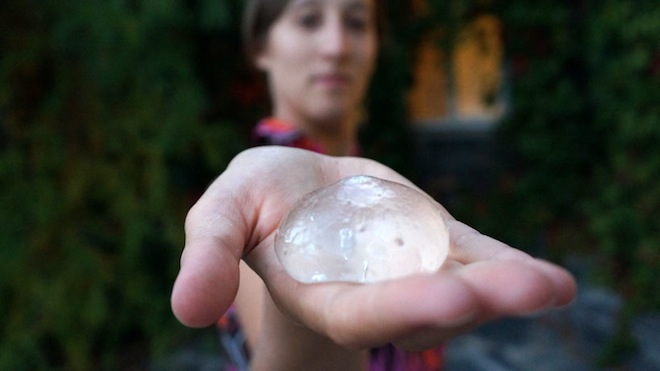
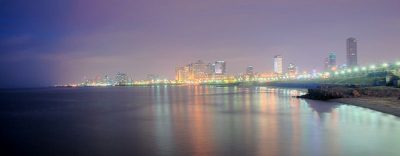
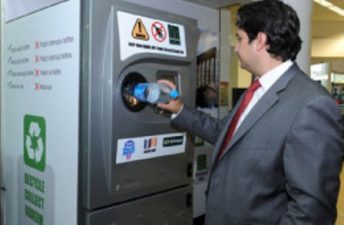
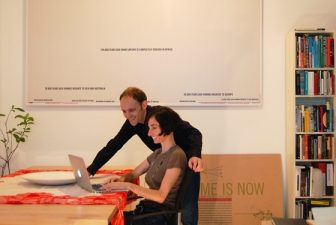
What a wonderful idea , I wonder if the material could be adapted for use in a 3 d printer in order to make a practical opening for the container?
Great that there’s a non-plastic option! but doesn’t this require a lot of (oil) energy, being frozen and stuff?